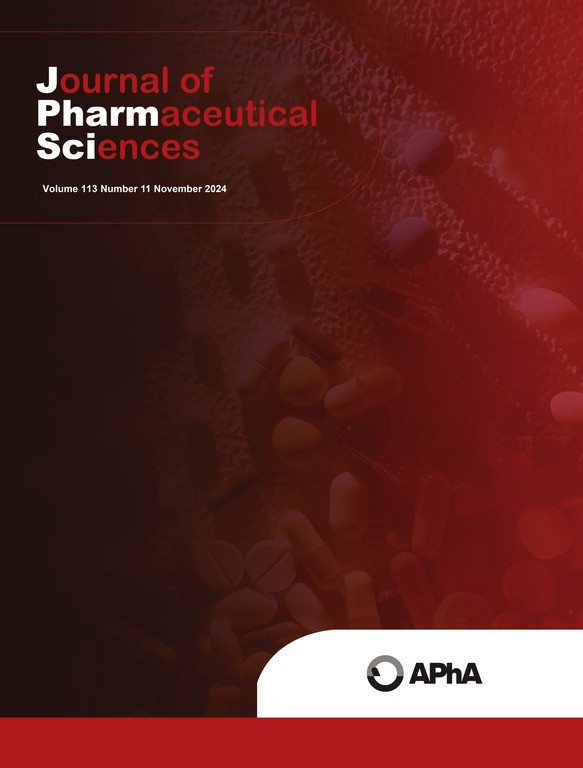Predictive dissolution modeling across USP apparatuses I, II, and III
IF 3.7
3区 医学
Q2 CHEMISTRY, MEDICINAL
引用次数: 0
Abstract
Dissolution testing provides in vitro drug release characterization and serves a critical role in the development of solid oral dosage forms. The most common dissolution apparatuses are the USP apparatuses I and II, for which in silico tools have been previously developed for predictive dissolution modeling (PDM). While apparatuses I and II serve the greater volume of projects, apparatus III offers higher agitation levels and multivessel capabilities, which is critical for certain projects, and the physics of which have not been previously characterized. To mitigate that knowledge gap, the present work characterizes the transport physics and thermodynamics of dissolution apparatus III, such that a 1-D model is established and validated which scales release kinetics with agitation level across apparatuses I, II, and III. The resulting PDM is calibrated with at least two dissolution experiments at different agitation levels, for a particular formulation-medium combination, after which release kinetics are predicted within the design spaces of the three apparatuses. Calibration data can come from experiments using a single apparatus or different apparatuses, while still predicting across all three apparatuses. Erosion-based formulations are used for validation. Additionally, apparatus III vessel residence time analysis is demonstrated.

预测溶出度模型跨USP设备I, II和III。
溶出度测试提供了体外药物释放特性,在固体口服剂型的开发中起着关键作用。最常见的溶解仪器是USP仪器I和II,之前已经开发了用于预测溶解建模(PDM)的硅工具。虽然设备I和II服务于更大的项目量,但设备III提供更高的搅拌水平和多容器能力,这对某些项目至关重要,并且其物理特性以前没有被描述过。为了弥补这一知识差距,本研究对溶解装置III的输运物理和热力学进行了表征,从而建立并验证了一个一维模型,该模型根据设备I、II和III的搅拌水平来衡量释放动力学。对于特定的配方-介质组合,在不同搅拌水平下,通过至少两次溶解实验对所得PDM进行校准,之后在三个设备的设计空间内预测释放动力学。校准数据可以来自使用单一设备或不同设备的实验,同时仍然预测所有三个设备。基于侵蚀的配方用于验证。此外,还演示了仪器III容器停留时间分析。
本文章由计算机程序翻译,如有差异,请以英文原文为准。
求助全文
约1分钟内获得全文
求助全文
来源期刊
CiteScore
7.30
自引率
13.20%
发文量
367
审稿时长
33 days
期刊介绍:
The Journal of Pharmaceutical Sciences will publish original research papers, original research notes, invited topical reviews (including Minireviews), and editorial commentary and news. The area of focus shall be concepts in basic pharmaceutical science and such topics as chemical processing of pharmaceuticals, including crystallization, lyophilization, chemical stability of drugs, pharmacokinetics, biopharmaceutics, pharmacodynamics, pro-drug developments, metabolic disposition of bioactive agents, dosage form design, protein-peptide chemistry and biotechnology specifically as these relate to pharmaceutical technology, and targeted drug delivery.

 求助内容:
求助内容: 应助结果提醒方式:
应助结果提醒方式:


